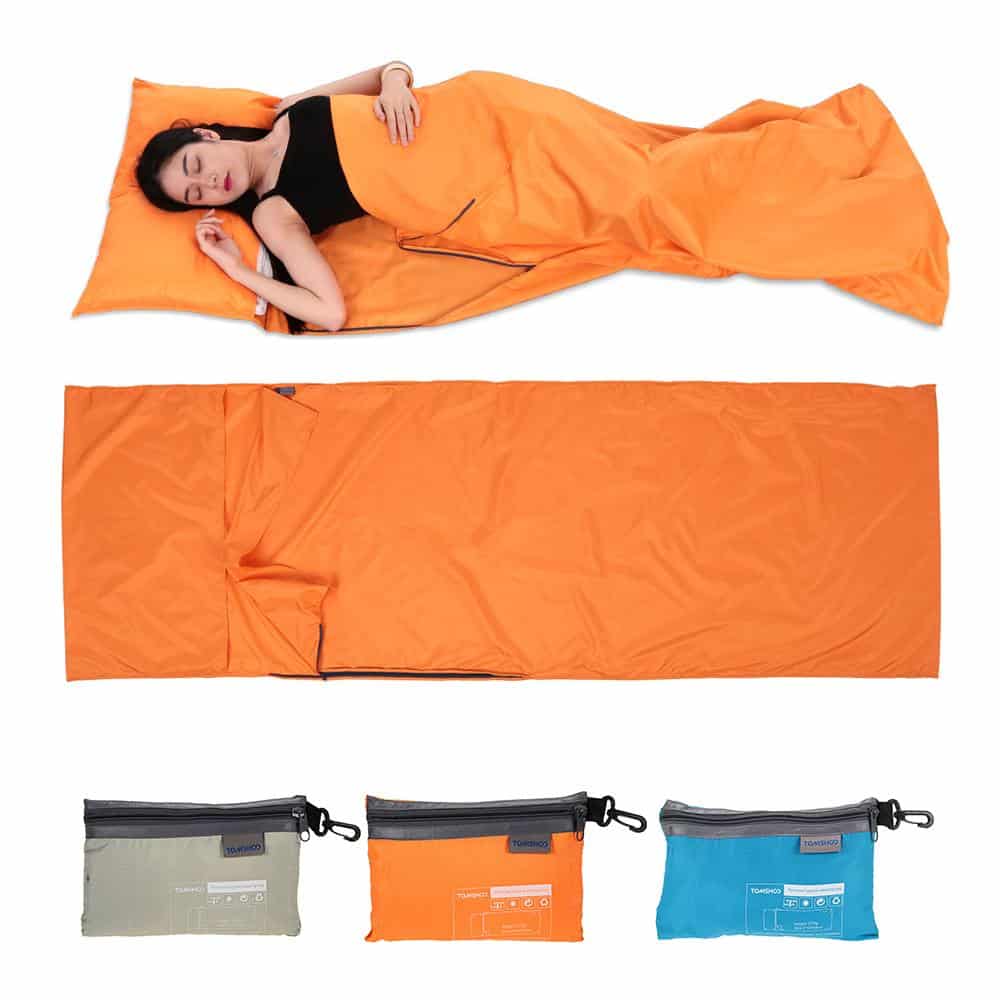The Ultimate Guide to Sleeping Bag Liners: Unleash Your Camping Comfort

When it comes to camping, a good night's sleep is essential for a successful outdoor adventure. And one often overlooked but incredibly helpful accessory to enhance your sleeping experience is a sleeping bag liner. A sleeping bag liner is a lightweight and versatile addition to your gear that can transform your camping comfort. Whether you're camping in freezing temperatures or enjoying a summer night under the stars, a sleeping bag liner can provide added warmth, hygiene, and even protection for your sleeping bag. In this ultimate guide, we'll explore everything you need to know about sleeping bag liners, so you can unleash your camping comfort and get the most out of your outdoor escapades. Let's dive in and discover the wonders of these little-known camping essentials!
Benefits of Using a Sleeping Bag Liner
Enhanced Hygiene: Using a sleeping bag liner provides an added layer of cleanliness and hygiene during your camping adventures. It acts as a barrier between you and the sleeping bag, preventing direct contact with sweat, oils, and other bodily fluids. This not only helps to keep your sleeping bag cleaner, but it also reduces the need for frequent washing, prolonging its lifespan.
Added Comfort: A sleeping bag liner can significantly enhance your comfort while camping. Liners are typically made from materials that feel soft against the skin, providing an extra layer of cushioning and insulation. They can help regulate temperature, keeping you warm during chilly nights and reducing heat accumulation in warmer climates. Additionally, some liners have moisture-wicking properties, keeping you dry and comfortable during humid conditions.
Versatility and Customization: Sleeping bag liners come in various materials, styles, and sizes, allowing you to personalize your camping experience. Liners can add extra warmth in colder weather by increasing the overall insulation of your sleeping bag. On the other hand, in hot and humid conditions, using a liner alone can provide a lightweight and breathable alternative to a sleeping bag. Furthermore, liners are easy to clean and dry quickly, making them convenient for multi-day trips or when access to laundry facilities is limited.
Note: This is section 1 out of 3 sections.
2. Types of Sleeping Bag Liners
There are various types of sleeping bag liners available to enhance your camping comfort. Let's take a look at three popular options:
Cotton Liners: Made from breathable and natural cotton fabric, these liners provide a cozy and comfortable feel. Cotton liners help regulate body temperature by wicking away moisture and ensuring a dry sleeping environment. They are ideal for warmer climates or use in hostels and huts, where the main purpose is to add a layer of cleanliness and comfort to the sleeping experience.
Thermal Liners: If you're planning to camp in colder conditions, thermal liners are a great choice. These innovative liners are designed to trap body heat, offering additional insulation and warmth during chilly nights. sleeping bag thermal liner are often made of materials like fleece or polyester blends that provide excellent heat retention properties. They are perfect for winter camping adventures or any situation where extra warmth is essential.
Silk Liners: For those seeking a luxurious touch, silk liners are the way to go. These lightweight and incredibly soft liners offer a silky smooth feel against the skin. Silk is naturally temperature-regulating, keeping you cool in warm weather and warm in cool weather. Additionally, silk liners are known for their antibacterial properties and are easy to pack due to their compactness. Silk liners are an excellent choice for backpackers and adventurers who prioritize comfort and compactness.

By understanding the different types of sleeping bag liners available, you can choose the one that best suits your specific camping needs and preferences. Whether it's adding insulation, breathability, or indulging in a touch of luxury, the right liner can truly enhance your camping comfort and allow you to fully enjoy your outdoor escapades.
3. How to Choose the Right Sleeping Bag Liner
When it comes to selecting the ideal sleeping bag liner, there are a few factors to consider. Here are three key aspects to keep in mind:
Material: The first thing to think about is the material of the sleeping bag liner. Different materials offer various benefits. For instance, silk liners are lightweight and ultra-soft against the skin, making them perfect for those who want a luxurious feel. On the other hand, synthetic liners are highly durable and great for outdoor adventures where moisture might be a concern. Consider your preferences and the intended use of the liner when deciding on the material.
Size and Shape: It's essential to choose a sleeping bag liner that matches the size and shape of your sleeping bag. Liners are available in different lengths and widths, so be sure to check the measurements before making a purchase. A liner that is too small may restrict movement, while one that is too big might not provide the desired level of coziness. Take time to find the right fit to fully enjoy the benefits of your liner.
Features: Lastly, consider the additional features that the sleeping bag liner offers. Some liners come with built-in insect repellent properties, which can be highly beneficial during camping trips in bug-prone areas. Others have antimicrobial treatments to help keep the liner fresh and odor-free for longer periods. Take note of the unique features that align with your needs and consider them as part of your decision-making process.
By considering these factors - material, size and shape, and additional features - you can choose the right sleeping bag liner that will enhance your camping comfort and ensure a restful night's sleep. So, take your time, do your research, and invest in a liner that will truly unleash the comfort of your camping experience.
